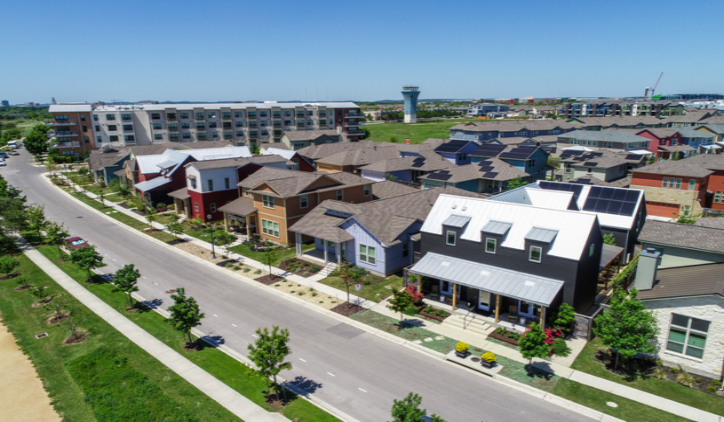There are several important differences that differentiate single-family versus multi-family real estate investing. Reviewing the key differences can help you determine which strategy has the highest probability of helping you achieve your financial goals.
We will be looking at five specific characteristics and describing why they are important:
- Property Management
- Real Estate Appreciation
- Scaling Opportunities
- Use of Leverage
- Cash Flow Potential
Property Management
Common sense says property management responsibilities are much simpler when you invest in a single-family property. You only have to deal with one tenant per property. You hope that person is a good tenant who pays rent on a timely basis and does not damage your property.
The vast majority of people who invest in multi-family real estate choose to hire a professional property management firm. Yes, this is an expense that reduces your net rental income, but peace of mind makes it worth it. You should let experienced property management professionals worry about filling vacancies, collecting rents, and addressing maintenance problems.
Professional property management is a relatively small, tax deductible expense that will enable you to enjoy the benefits of owning a fully-occupied, well maintained, multi-family property. Anything less may actually cost you money.
Real Estate Appreciation
If you are a single-family property real estate investor and you made repairs or made an improvement to your rental property you could be adding to its appreciation potential and your future rental income.
Granted the investment amount is probably higher, but so are the rewards if you are a multi-family property real estate investor and you make repairs or improvements to your property. You will be adding to your appreciation potential and rental income from a number of tenants.
There are several strategies you can employ for increasing the value of a multi-family property. If you own an apartment building, you may want to consider adding a swimming pool, a playground for children, a designated dog-walking “park” or a communal game room that’s well-kept and current. Depending on the neighborhood, it may also pay to add safety features (fencing, lighting, patrols) that people will pay a premium to obtain.
Scaling Opportunities
Real estate investors who focus on single-family properties are limited in the ways they can scale their investments. If they want to double their rental income they have to buy a second property, and a third property, and so on. This could be a very inefficient use of their time and resources.
However, if you invest directly in a multi-family property like an apartment or high-rise, all you have to do is fill empty units in your apartment building or high-rise to increase your rental income and appreciation potential. You do not have to buy another building or add additional units to scale your investment.
Use of Leverage
You can buy stocks in margin accounts so you can leverage your holdings - number of stocks or shares. Real estate investors make even greater use of leverage.
$500,000 down may buy you a $2.5 million dollar property. The debt is serviced by the rental income. As the debt is paid down and rents go up, your equity and the value of the property go-up. And don’t forget, the interest you pay the mortgage holder is tax deductible.
This leverage is why so many wealthy people use real estate to increase their net-worth.
Cash Flow Potential
You already know multi-family and high-rise investing has some serious advantages compared to investing in single-family residences. There is another major benefit. As you may already know, cash flow is king when you invest in multi-family apartments and high-rises.
Cash flow is the foundation of real estate investing. You own the building. People are willing to pay you money to live in your building. How many people and how much they pay produce the holy grail of real estate investing - the amount of cash your property produces in the form of rental income.
You have a lot more control when you invest in multi-family properties. You do not have this amount of control when you invest in the stock market. Your returns are impacted by a lot of variables that you have no control over:
- The performance of the companies that issued the stock
- Interest rates
- Global economies
On the other hand you have a lot of control over your multi-family real estate investments: Number of units, location, quality, rental rates, and other variables. And, you control your future income when you raise rents. A small percentage increase times your number of units can produce a substantial increase in income. And the value of your building (appreciation potential) is a multiple of that income.
Increases in value, due to increased rents, are real. That is much different than the unrealized gains that are produced by the stock market, as long as you hold onto the stock. Plus, you can’t spend unrealized gains unless you sell the stock. You have immediate access to the rental income that is produced by your multi-family building - after servicing any potential debt on the property.
But, even then you win. The interest is deductible and the debt remains the same while your rental income is increasing year by year.
Conclusion
We hope you see the wisdom of investing in multi-family properties. This investment strategy can produce significant income, appreciation, and tax benefits for years.
Plus, these returns are more stable than stocks, because regardless of stock market volatility, people still need places to live. In uncertain times, home ownership may decline, which can increase multi-family occupancy rates.
If you are an accredited investor, you may want to consider investing with professionals who do all of the work for you. Using this strategy, you can also invest in multiple properties, which can diversify your investments and reduce your potential risk. In particular, if you invest in different locations.



